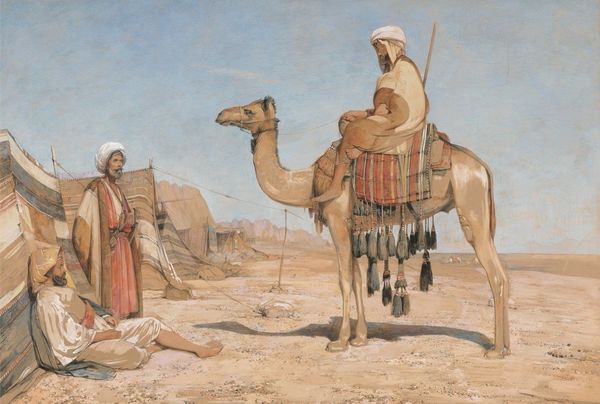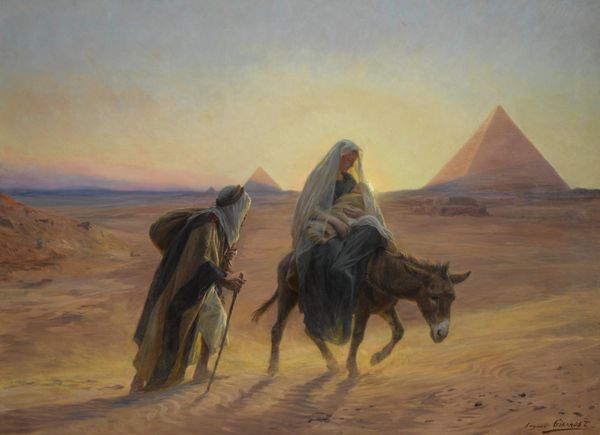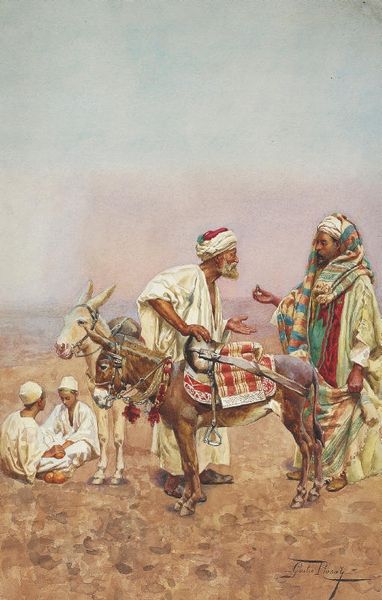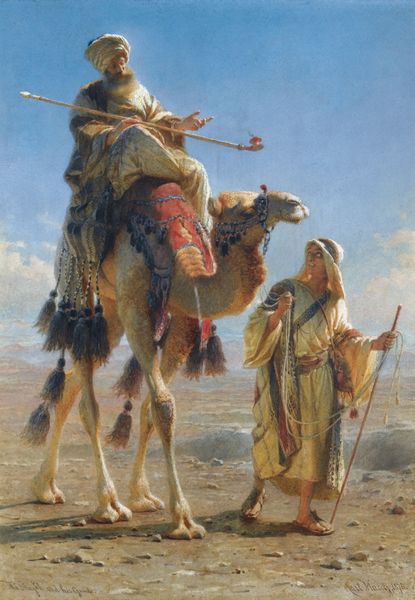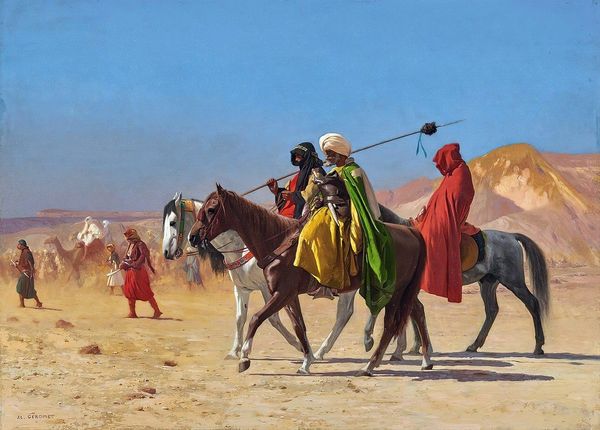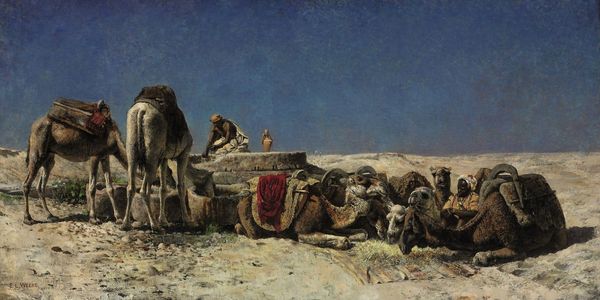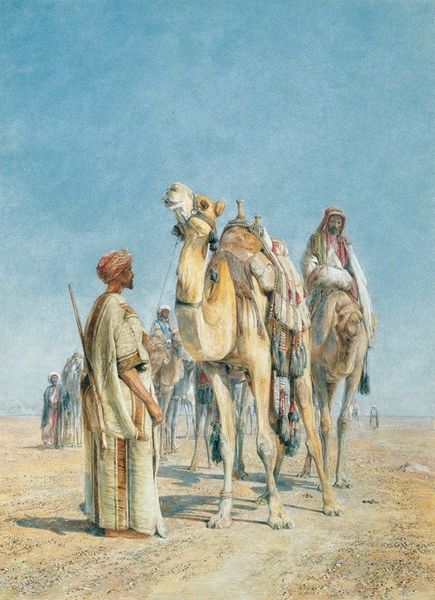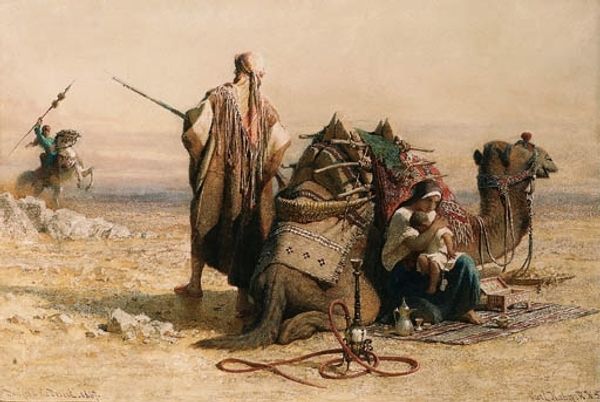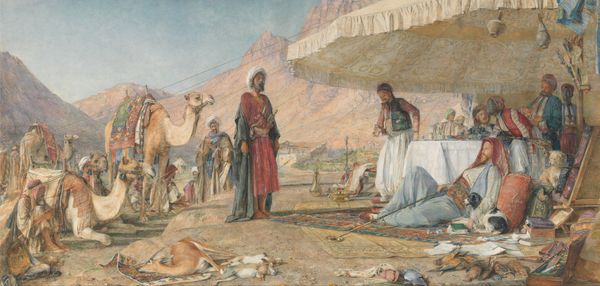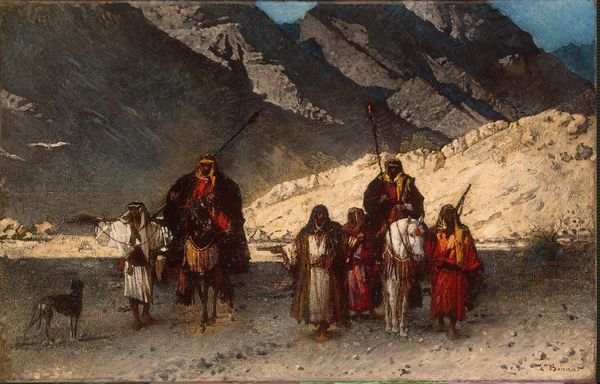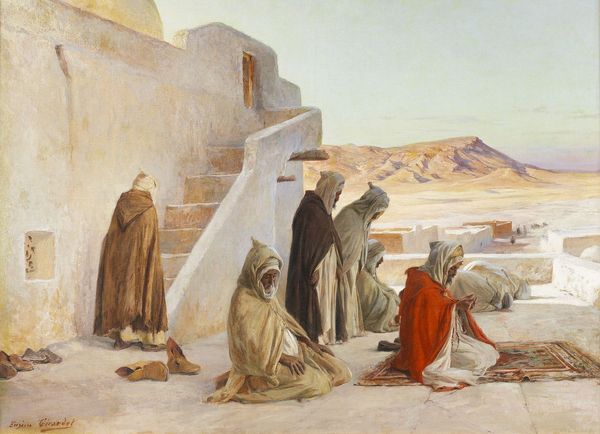
watercolor
#
landscape
#
figuration
#
watercolor
#
orientalism
#
watercolour illustration
#
genre-painting
#
watercolor
Copyright: Public domain
Curator: Look at this watercolour, "Desert Nomads" by Giulio Rosati. Immediately, I am struck by how muted the colour palette is, primarily tans and blues. There's an emphasis on earth tones reflecting the harsh environment. Editor: Indeed, the limited palette seems appropriate for depicting a scene within an arid landscape, but also suggestive of constraint, social or cultural pressures bearing on these figures and their environment. Curator: Precisely, and I feel this stylistic choice speaks volumes about how the artist viewed this culture. Note how the figures interact, or rather, don’t. One is mounted on a horse and seems to be directing the conversation, one is standing with an air of passive receptivity, and one sits cross legged in the foreground facing down. Do you get a sense of social stratification? Editor: Definitely. I would say there are explicit hierarchical indicators at play here, particularly in how dress codes demarcate identities and relationships within this representation of nomadic life. The turban and flowing robes worn by the figure on horseback signal a higher status, as do the ornate horse trappings. But it’s important to recognize this imagery falls into the category of Orientalism, an artistic trend that reflects a Western perspective on Eastern cultures. Rosati wasn’t simply documenting; he was interpreting through a specific socio-political lens. Curator: That’s an important point. He uses specific visual language rooted in a Western imagination about the ‘Orient.’ How do you interpret the visual weight placed on each figure, symbolically? Editor: Well, the figure on horseback quite literally looms over the others. Rosati stages a moment of implied power dynamics and potential conflict within this desolate tableau. I keep considering how staging like this reinforces and disseminates specific narratives. This wasn’t simply an isolated artistic vision; such depictions helped shape and confirm European notions about the East and its power structures. Curator: So true. There is such weight attached to visual shorthand in works like this, isn’t there? It almost serves as a form of propaganda – quietly embedding ideas and solidifying stereotypes in the viewer's mind. Editor: Absolutely, images are never neutral, especially those viewed through the lens of power imbalances. Examining these historical depictions allows us to critically unravel the assumptions embedded within their composition, colour and subject matter. Curator: Absolutely! Reflecting on this artwork has made me appreciate how much the past can be read in the visual cues presented within these historical scenes. Editor: Indeed, and hopefully a deeper awareness of the political dynamics shaping these images can lead us to new modes of representation, critique and engagement.
Comments
No comments
Be the first to comment and join the conversation on the ultimate creative platform.
